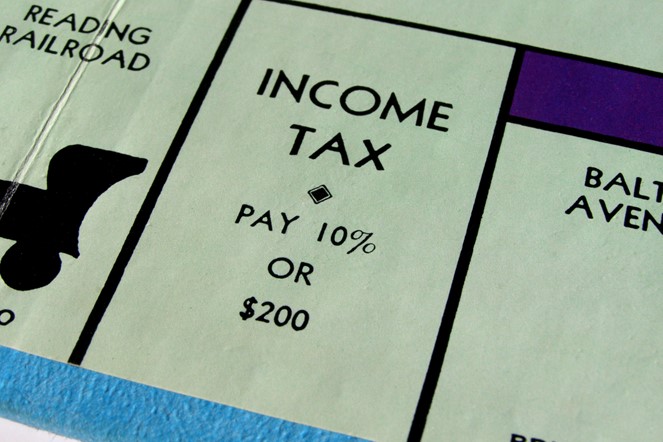
Increased Take Home Pay in 2023 Thanks to the IRS (and Inflation)
If two negatives make a positive, what do you get when you cross inflation with the IRS?
In addition to receiving much higher COLA increases on Social Security payments, and earning an interest rate in excess of 9% on US Savings Bonds, those making an income in 2023 are likely to see more take-home pay. This should happen whether or not they get a raise. An IRS calculation devised to prevent bracket creep is to thank for this. While high inflation is destructive, at least there are a few things that are put in place that will automatically adjust and help ease the pain.
The adjustment to tax brackets typically has had a minimal impact on workers paychecks. But the tax formulas that are law and the persistent inflation through 2022 point to significant impact on workers 2023 tax bill. Next year when income tax thresholds and the standard deductions are raised, if all else is unchanged, there will be more money in the income earners’ pockets, and less going to the government.
How Much More?
According to an accounting professor at Northern Illinois University named Jim Young, a single taxpayer with $100,000 in adjusted gross income in 2023 could experience a tax savings of about $500, or $42 each month.
Contribution maximums are also expected to be raised where tax-advantaged savings for retirement could also help reduce tax burdens in the coming years. Estate and gift tax thresholds would also automatically be increased by as much as $2 million more for a couple.
The IRS makes the adjustments based on formulas and inflation data spelled out in the tax code. This is different than the headline CPI-U which is most often reported.
The inflation measure used for the tax and contribution adjustments is the Chained Consumer Price Index (C-CPI-U), which takes into account the substitutions customers make when costs rise. The average of the chained CPI from September 2021 through August 2022 is used to calculate the 2023 adjustments, which the IRS will announce next month. These ultimately affect tax returns for the 2023 tax year filed in early 2024.
Price increases eroding purchasing power are running at the most rampant pace in forty years. Based on the current average of the C-CPI-U, here are estimates on what to expect, according to the American Enterprise Institute:
Tax levels and other tax bracket thresholds and breakpoints will increase by around 7% over 2022. The 2022 increase over 2021 was around 3%, which was the largest percentage increase in four years. For the tax year 2023, income earners will see the breakpoints moved by the most in 35 years.
The top federal income tax threshold in 2023 is expected to rise by nearly $50,000 next year for married couples, and that 37% rate will apply to income above $693,750. For individuals, the top tax bracket will start at $578,125.
The standard deduction for married couples is expected to be $27,700 for 2023, up from $25,900 this year, and $13,850 for individuals, up from $12,950. This is the amount that those who do not itemize deductions can reduce their W-2 federal income by before being subject to income tax.
The federal estate tax exclusion amount, what a person can protect from estate taxes, is $12.06 million this year. That’s expected to rise to $12.92 million by 2023, meaning a married couple can shield nearly $26 million from estate taxes.
The annual tax-free gift limit is expected to rise from $16,000 this year to $17,000 by 2023.
The maximum contribution amount for an individual retirement account is expected to jump to $6,500 for 2023, up from $6,000, where it has been since 2019. The maximum contribution allowed for a flexible health account is expected to increase to $3,050 in 2023, up from $2,850 this year.
The maximum contribution amount for a 401(k) or similar workplace retirement plan is governed by yet another formula that uses September inflation data. It is estimated that the contribution limit will increase to $22,500 in 2023 from $20,500 this year and the catch-contribution amount for those age 50 or more will rise from $6,500 to at least $7,500.
The child tax credit under current law is $2,000 per child is not adjusted for inflation. But the additional child tax credit, which is refundable and available even to taxpayers that have no tax liability, is adjusted for inflation. It is expected to increase from $1,500 to $1,600 in 2023.
For those that look forward to capping out payments to Social Security, there is bad news. This has also increased. According to the 2022 Social Security Trustees Report, the wage base tax rate is projected to increase 5.5% from $147,000 to $155,100 in 2023.
Costs are rising, but so are deductions. It’s improbable that the reduced taxes will offset skyrocketing inflation, but at least there is one financial category that is helped by the increases.
Managing Editor, Channelchek
Sources
https://www.irs.gov/newsroom/irs-provides-tax-inflation-adjustments-for-tax-year-2022
https://www.spamchronicles.com/high-inflation-brings-changes-to-your-tax-bill/
